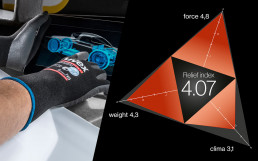What’s the difference between good and excellent protective equipment?
How reliable their protective features are? Well, perhaps – but that’s certainly not the whole story. The best PPE is one that users are happy to wear on a long-term basis, and above all else, that they do so regularly. There’s nothing less safe than uncomfortable and unergonomic equipment that gets left in someone’s locker at the start of their shift because it’s more of a hindrance than a help while they’re working.
The crux of the matter – for buyers in particular – is this:
there are countless standards for PPE protective properties – but none at all for ergonomics or wearer comfort.
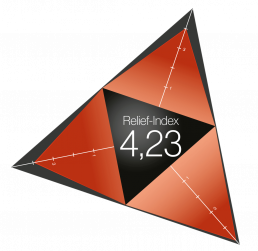
That’s why we joined forces six years ago with Prüf- und Forschungsinstitut Pirmasens e. V. (Test and Research Institute Pirmasens), the Hohenstein Institute and Chemnitz University of Technology to develop scientific methods to measure the ergonomics and relief provided by PPE. Our aim: to be able to measure and compare these features based on objective criteria across different products and manufacturers.
Our most ergonomic product system of all time
We’ve already explained this in detail in this blog article, so we will just give a brief outline here. We test every newly developed product in the following three categories: force (that acts on the wearer), climate (e.g. breathability or anti-fogging properties, depending on the product type) and weight. The values from these individual measurements are combined to form a relief index. If a product with a high index value meets our requirements for ergonomics and relief, we will include it in the uvex i-gonomics product system.
We first presented uvex i-gonomics to the public at A+A four years ago – and we added a range of new products to the product system two years ago.
#1 uvex pheos faceguard
The uvex pheos faceguard safety helmet system achieves an extremely respectable relief index of 4.23. Its low weight (weight) and ergonomic weight distribution that protects the neck (force) are both exceptional – but most notably, the visor remains fog-free for an extremely long period of time, even in the most challenging conditions (climate).
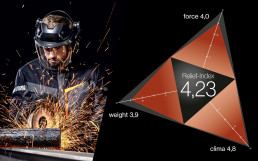
#2 uvex suXXeed ESD seamless shirt
At 4.73, the uvex suXXeed ESD seamless shirt comes very high up in the ergonomics rankings – due in part to the fact that the Tencel® material used is extremely breathable and fast-drying, creating an optimal environment for the wearer at all times (climate). Its low weight (weight) is also an important factor. However, the shirt scores a perfect 5.0 for its elasticity measurement (force). Top marks! It offers uncompromising freedom of movement and has no annoying seams, meaning the garment acts almost like a second skin.
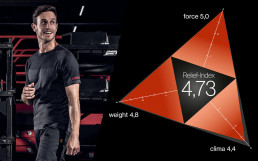
#3 uvex 1 G2 safety shoes
In the area of foot protection, the new uvex 1 G2 has made it into the i-gonomics product system with a relief index of 4.03. Its low weight (weight) and comfortable shock absorption (force) prevent premature fatigue in the wearer, while the shoe’s breathable and hygienic properties conduct moisture outwards to regulate the climate within the shoe effectively (climate).
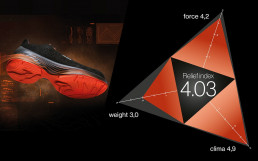
#4 uvex phynomic airLite A ESD
The new uvex phynomic airLite A ESD provides wearers with a high level of sensitivity (force) for the work they do. The touchscreen-compatible glove achieves a relief index of 4.07, thanks mainly to its low weight (weight) and excellent hand climate management (climate).
